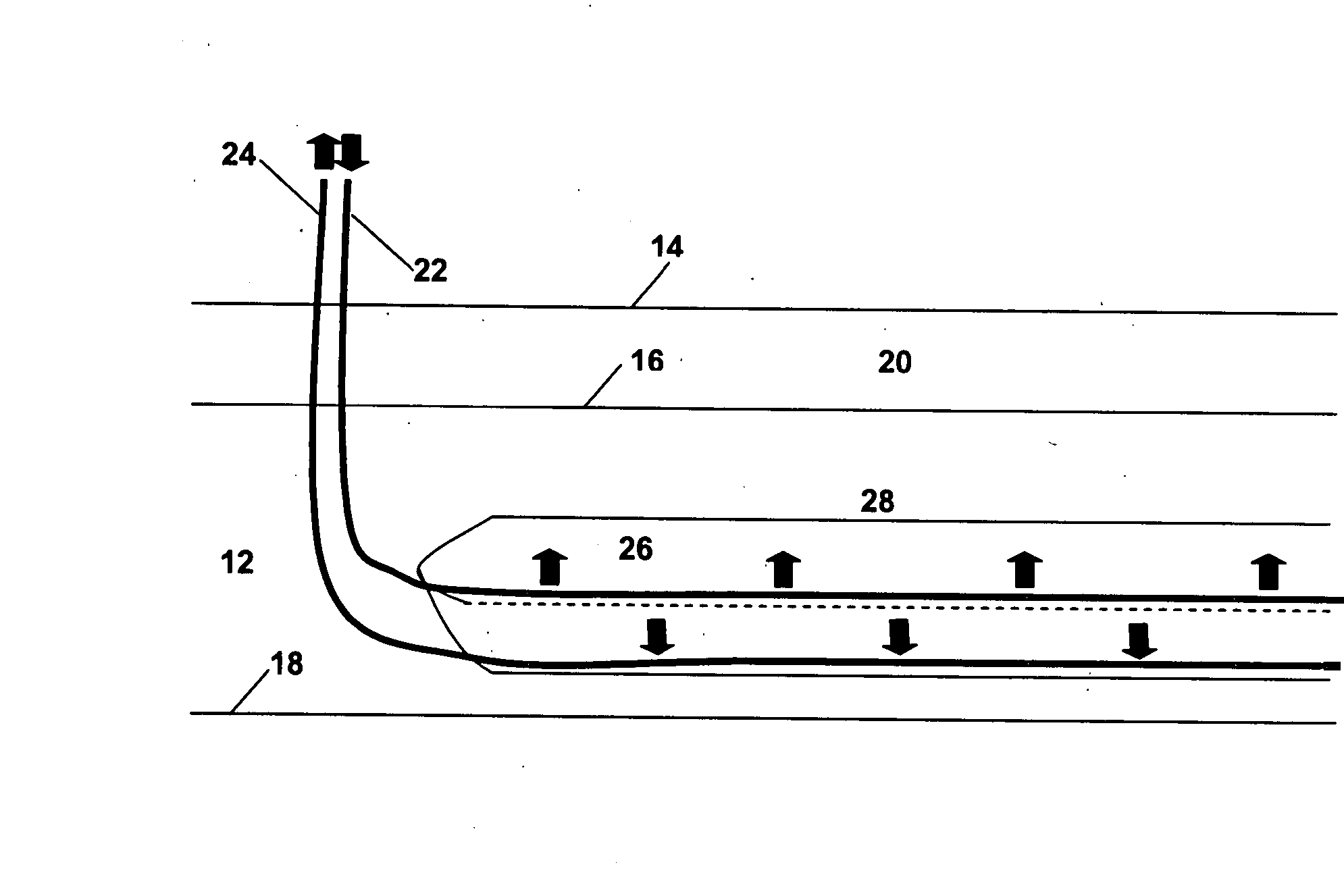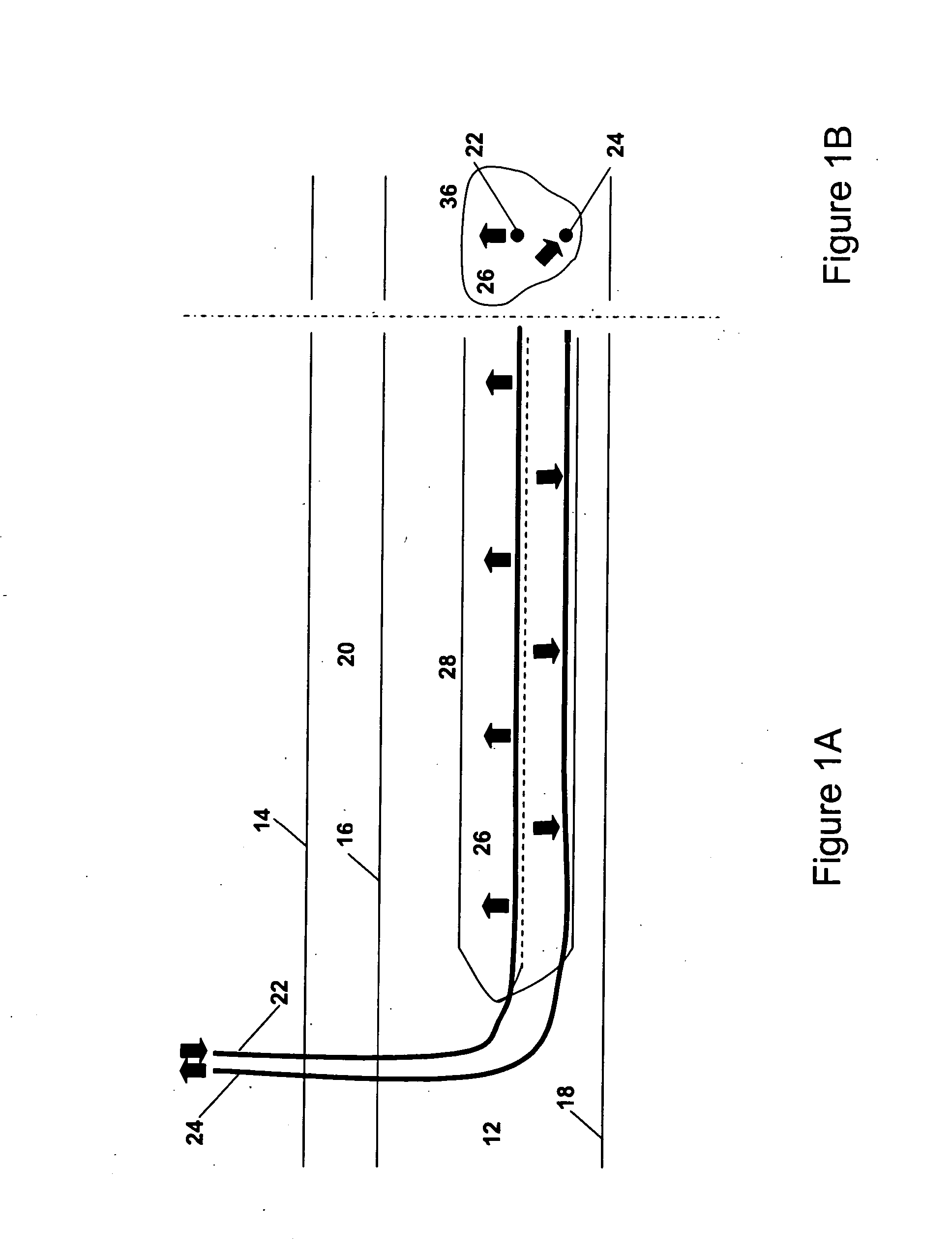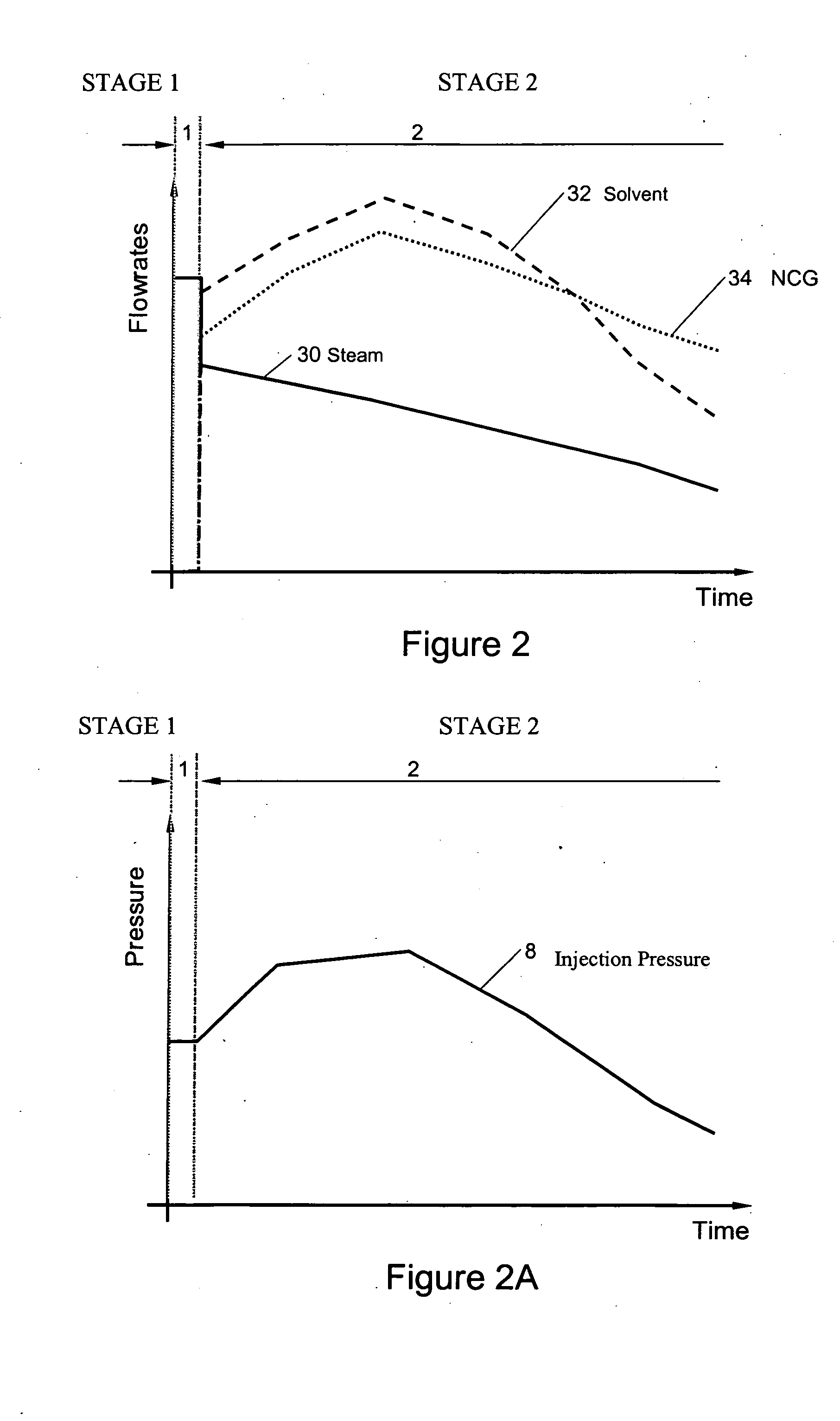In situ process to recover heavy oil and bitumen
a technology of heavy oil and bitumen, applied in the field of in situ process to recover heavy oil and/or bitumen, can solve the problems of increasing the temperature of heavy oil or bitumen, affecting process economics, and unclear what the optimal amount of non-condensable gas is, and achieves the effect of maximizing the solubility of solven
- Summary
- Abstract
- Description
- Claims
- Application Information
AI Technical Summary
Benefits of technology
Problems solved by technology
Method used
Image
Examples
Embodiment Construction
[0034] With reference to the Figures, a phased heating and solvent enhanced recovery process for recovery of in situ bitumen or heavy oil is described. Broadly, the invention consists of a sequence of fluid injection and operating pressure changes that results in significantly improved heavy oil or bitumen production from a heavy oil or bitumen reservoir.
[0035] Heavy oil and bitumen is a more viscous material compared to light oils at in situ initial reservoir temperatures and pressures. Also, at elevated temperatures, heavy oil and bitumen has higher viscosity than lighter hydrocarbons such as solvent at the same temperature. At even more elevated temperatures, even though heavy oil and bitumen remains in liquid state, the solvent can be in the gaseous state and freely move throughout the reservoir providing there is a driving pressure gradient to motivate the solvent motion. The amount of solvent that can dissolve in heavy oil or bitumen depends on the reservoir temperature and p...
PUM
 Login to View More
Login to View More Abstract
Description
Claims
Application Information
 Login to View More
Login to View More - R&D
- Intellectual Property
- Life Sciences
- Materials
- Tech Scout
- Unparalleled Data Quality
- Higher Quality Content
- 60% Fewer Hallucinations
Browse by: Latest US Patents, China's latest patents, Technical Efficacy Thesaurus, Application Domain, Technology Topic, Popular Technical Reports.
© 2025 PatSnap. All rights reserved.Legal|Privacy policy|Modern Slavery Act Transparency Statement|Sitemap|About US| Contact US: help@patsnap.com



